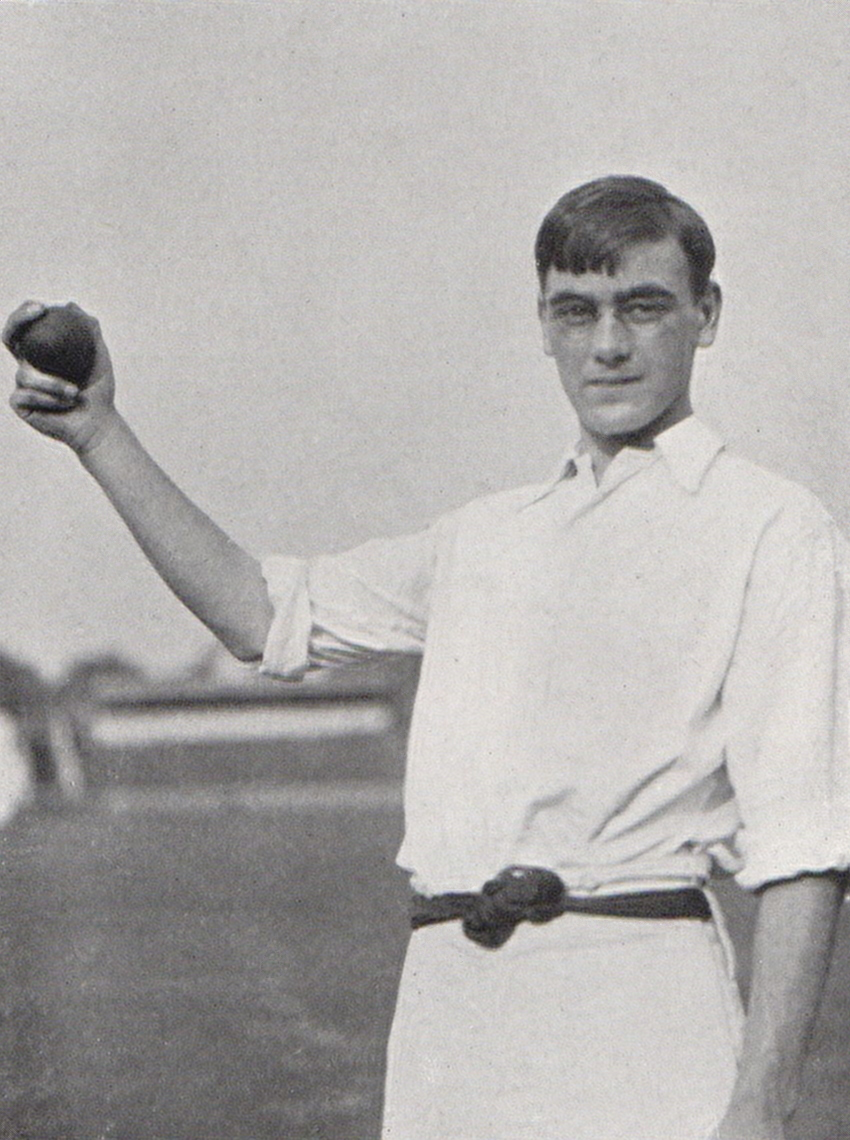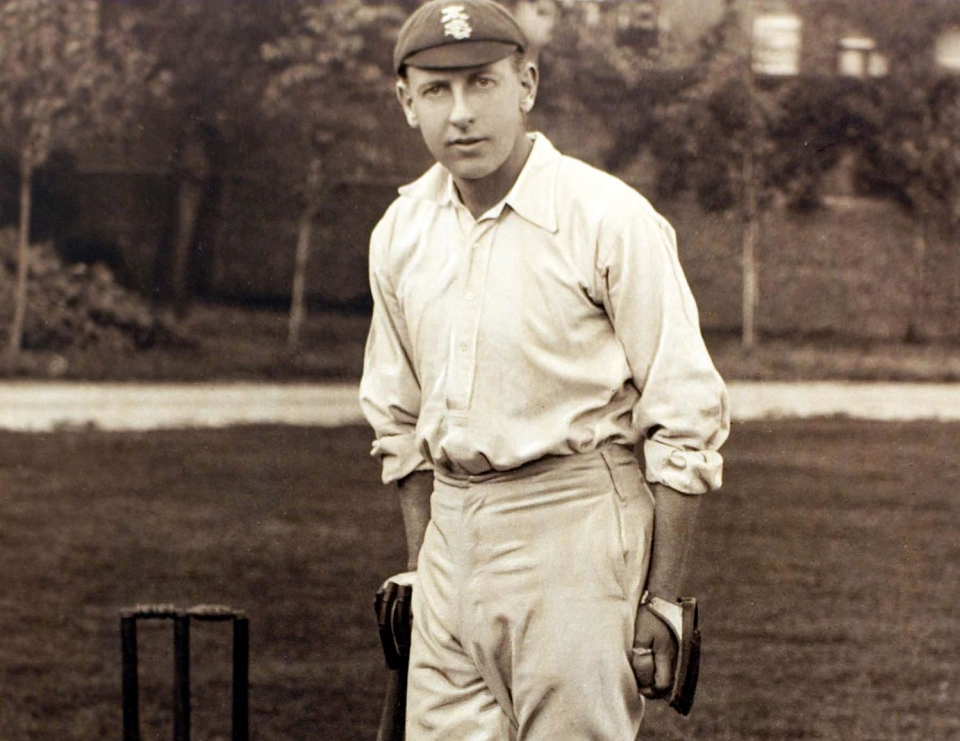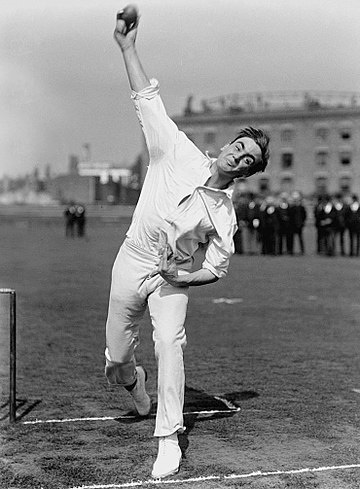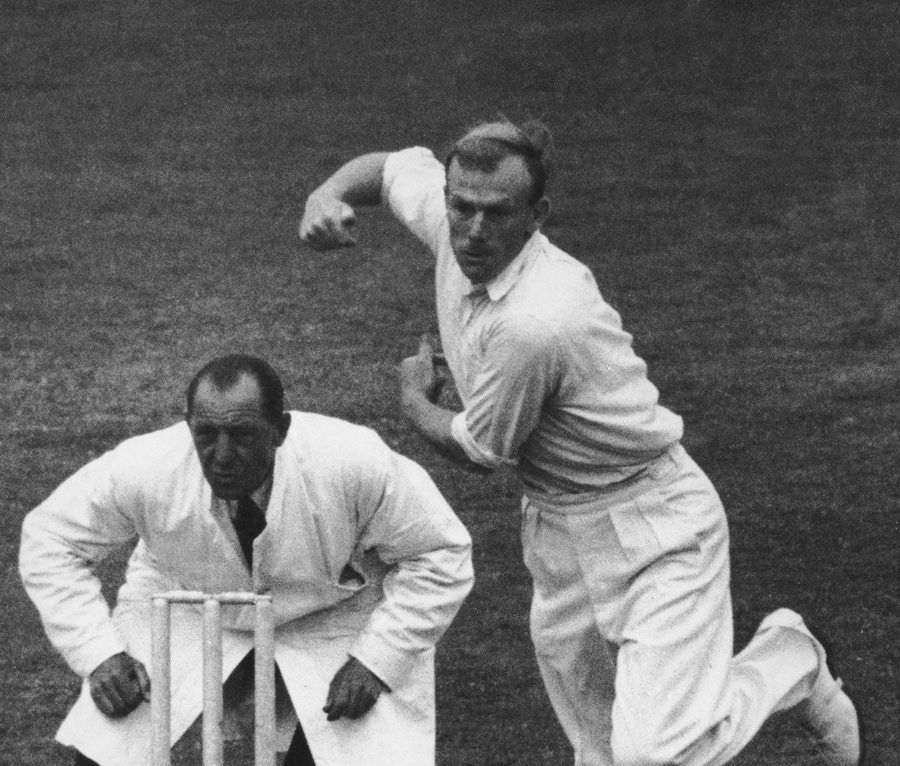From Surrey to the Sheffield Shield
Pat Rodgers | July 01, 2023

19 February 1963: the English spinner Tony Lock completed his initial season with Western Australia. 2 May 1963: the former English Test all-rounder, Jack Crawford, died in a Surrey hospital.
"So what?" I can hear you say. Well, on closer examination, not only were these two cricketers the first Test players from England to appear in the Sheffield Shield competition, but their lives and careers share quite remarkable parallels.
The Surrey county club can boast many fine players in its history. Crawford and Lock rank high among them. Crawford's talent was obvious from an early age. He had such great success as a schoolboy cricketer that he was selected for Surrey at just 17 years of age. Two years later, he was playing the first of his 12 Tests as the youngest Englishman to do so and he was also a Wisden Cricketer of the Year in 1907. The world seemed to be at his feet. However, a dispute with his county led to his venture to Australia.
Crawford's interest in Australia seems to have begun when he toured there in 1907-08 with the MCC team. He enjoyed bowling on the pitches and took a record 30 wickets in the Test series against the likes of Trumper, Macartney, Armstrong and Noble. Rumours of him remaining in Australia arose but did not eventuate.
When the Australians toured England in 1909, he was chosen to captain Surrey against them. The omission of three professional bowlers from the county side made the attack very weak considering that Crawford himself was unable to bowl due to a shoulder injury. His refusal to accept the selected team placed him into a confrontation with a formidable English cricket figure.
The Surrey team had been selected by Henry "Shrimp" Leveson-Gower, the injured captain. He had been English captain, selector and went on to be Surrey president for a decade. The confrontation had huge repercussions. Crawford's Test-playing days were over as he was not considered for the tour to South Africa; he quickly arranged a trip to South Australia with the help of Victor Trumper who contacted Clem Hill in Adelaide; a position as a resident master at St Peter's College, Adelaide's most prestigious school, was organised; and within two weeks of his arrival, he was playing in a Sheffield Shield match for his new state. He became the first of 18 English Test cricketers to play for an Australian state.

Henry "Shrimp" Leveson-Gower
What a contribution Crawford made in four seasons with South Australia. His 6 for 59 in his first match led to a victory against New South Wales. His performance of 7 for 92 and 73 not out saw him hit the winning run in the seven-wicket win in Sydney which gave the Shield to his adopted state for the first time in sixteen years. He also played a key part in East Torrens winning the District Cricket Premiership that season.
In 1910-11 the South Australians just failed to repeat their success when they lost to NSW on a countback. Crawford's 368 runs at 61.33 included a half-century in each match. It seemed natural that thoughts about his qualifications to play for Australia began to emerge. Yet, the fact that he had played for England and that he was "a bird of passage and not a permanent residential Australian" made the Australian Board of Control hesitate. Charlie Kelleway was chosen instead.
Issues surrounding Crawford then began to surface. He resigned from his position at St Peter's and was appointed the Adelaide Oval clerk. This role involved coaching and being a youth scout. His century became the first to be recorded on the new Adelaide Oval scoreboard and he was also the first to have five wickets in an innings recorded on the board. Having lost all five matches that season, Crawford excelled in 1912-13 with a hattrick against Western Australia while taking 11 for 71. In the final match he scored 163 in just 177 minutes and captured match figures of 8 for 66 against Victoria as another Shield competition win was achieved.
During this period Crawford took the opportunity to travel to North America and New Zealand with two unofficial tours for which he was well paid. During the New Zealand tour, he scored an incredible 354 against a Canterbury XV and had double century partnerships with both Trumper and Noble. Despite the generous support that the South Australian Cricket Association had given, Crawford arranged a job in New Zealand. His treatment of the SACA has been viewed as "underhand, maybe despicable". While he had made such a positive impact on their cricket, his private life was sullied with a divorce and a complete lack of loyalty.

Jack Crawford
The story that overtures for Surrey's Jack Hobbs to come to South Australia in the early 1920s were rejected may have had something to do with the murky experience of Crawford there. It took until 1985-86 for Gladstone Small to become the next English Test cricketer to play Shield cricket in Adelaide.
In Crawford's obituaries there was little reference to these great deeds in Australia. Wisden even failed to include his first-class figures during his time in Australia in his career statistics. Yet, Neville Cardus recognised that "when young Crawford went to Australia, England lost a great Test player." The development of his cricket down under seemed evident by his effort against the AIF Services team in 1919. Having returned to Surrey, Crawford was batting when his county struggled against the pace of Jack Gregory and was 5 for 26. His counterattacking, unbeaten 144 was described by Cardus as "an innings beautiful and dauntless and not to be forgotten".
It took almost 50 years before another English Test cricketer played Sheffield Shield cricket. How did Tony Lock end up in Perth where he played nine seasons?
Ironically, he had been recommended for the county squad by the now Sir Hugh Leveson-Gower in 1948 almost 40 years after the Surrey man's dispute with Crawford. He also made his first-class debut as a 17-year-old like Crawford. Lock's county record was instrumental in Surrey's success of winning seven consecutive county titles and he followed in Crawford's footsteps when selected as a Wisden Cricketer of the Year in 1954.
Lock's Test record was a little inconsistent especially away from home. His career had been beset by accusations of throwing and he was remembered for taking the other wicket when Laker took 19 in the 1956 Test.

Tony Lock
So, when he was omitted from touring team to Australia in 1962-63, Lock, like Crawford, was attracted by an opportunity in the country whom he had also battled against in Test cricket. He was offered a position with Western Australia, but no one could have predicted how much of an impact this would have on him and that state's cricket.
Like Crawford, he played a major part in two Shield competition wins after a similarly long drought. Lock had great individual success becoming the first bowler after World War Two to take 50 wickets or more in a first-class season; he also worked extensively as a coach; he too returned to England but not to Surrey.
Lock was made captain of a fledging Leicestershire team 1965 and then as a balding 38-year-old he scored 89 against the West Indies at Georgetown in 1968 – his highest first-class score. It was clear that his time in Australia had improved his cricket just as Crawford's performances blossomed in the Australian environment so many years before. Both played the game aggressively and seemed to have thrived in the extremely competitive Shield competition.

Tony Lock
Strangely, for such a controversial character, Crawford led the last 40 years or so of his life in relative obscurity. He made occasional appearances at cricket games and functions. When he was top table guest at the functions celebrating Surrey's incredible run of success in the 1950s, did he speak to Lock with whom he shared so many similarities?
While Crawford's retirement was uneventful, the same cannot be said for Lock. He became an Australian citizen in the 1990s and continued coaching. One of his young female protegees accused him of sexual abuse and despite the clearing of this and another similar conviction, Lock's last years were stained by this. His wife died of a heart attack due to the stress and Lock was diagnosed with cancer that killed him soon after his conviction was overturned.
These two colourful characters blazed the way for sixteen other English Test cricketers to play for Australian state teams ranging from Botham, Graveney and Hick to the most recent, Mason Crane for NSW.
So, surely the death of Surrey's Crawford would have held great significance for Lock whose impact on Australian cricket was to be similarly dramatic.
With appreciation as this article was originally published in Vox Cricket Magazine








